Sochi – The Southern capital of Russia
You would have probably not known about Sochi today if not for the 2014 Olympics that made this city world famous. However, Sochi has been the largest Russian resort city, an important transport hub, and a major economic and cultural center of the Russian Black Sea coast for far longer than that. In 2012, Forbes called Sochi the best city for business in Russia. Today we will tell you why you should visit this city.
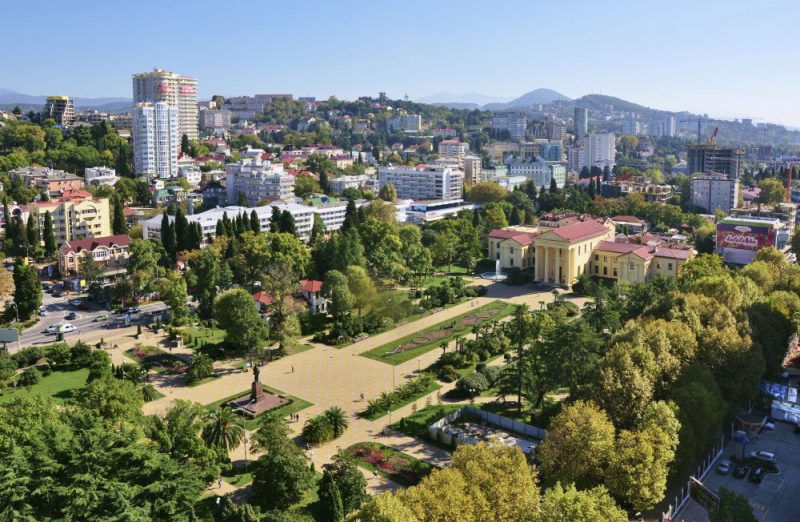
Location and climate
Sochi is considered to be the most elongated Russian city. The resort area, called Big Sochi, reaches 110 kilometres lengthwise.
The city is located at about the same latitude as Nice, France. The climate in Sochi is quite special – these are the most northern subtropics in the world. The city is humid and warm almost all year round, being protected from cold winds by Caucasus mountains and receiving heat in winter and coolness in summer from the Black Sea.
Due to the length of the city, the difference in climate in its different areas is quite noticeable.
Spring, a pleasant season with less rain but still with a cold sea, falls on March-April. Summer starts in the end of April – beginning of May and reaches a tourist peak in July-August. The best time to visit Sochi is September and October during the so called “velvet season”: the Black Sea is still warm, the air is not very hot, and the streets are not crowded with tourists. From November to January, local residents enjoy a warm autumn. Winter starts in February and lasts to mid-March. Frost and snowfall are extremely rare and usually last only a few days. Usually there is no snow cover in the coastal part of the city.
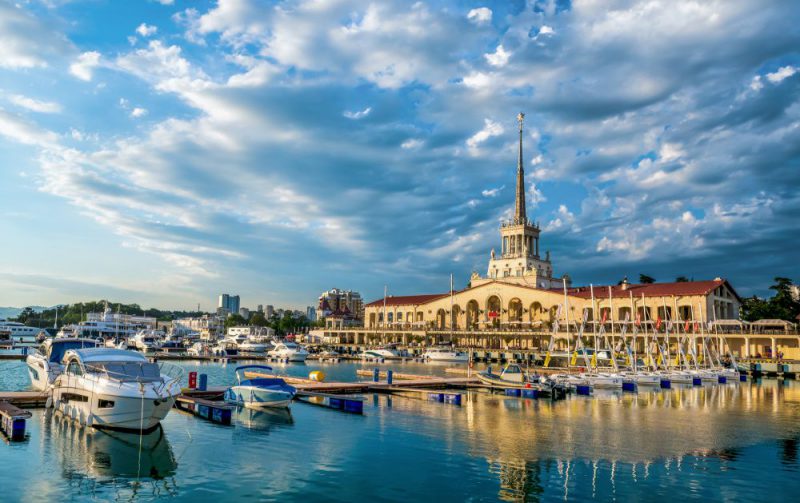
With its mild climate, Sochi is one of the rainiest cities in Russia and leaves far behind even St. Petersburg and Murmansk. The most rainy season is winter.
A bit of history
The territory of modern Sochi has been inhabited since ancient times. In the Middle Ages, the region was dominated by Caucasian mountain tribes, although there are also some ruins of several temples built by Christians. Several medieval fortresses are preserved around Sochi, but it is not known who built them and when.
The Russian Empire annexed these lands in 1829 after the Russo-Turkish war, but the mountain peoples did not want to recognise Russian domination. Almost half a century later, after winning the Caucasian War in 1864, Russia organised the deportation of warlike population of the area to Turkey.
Back then, this place was difficult to call a resort: there was no roads, communication with the outside world was available only by sea, malaria was raging in the region. The first settlers came here either looking for adventures, or escaping from a worst life.
The history of Sochi as a resort started mainly thanks to the hydrogen sulphide springs in Matsesta. The first enthusiasts came for these waters at the end of the 19th century. But Sochi became the true all-country resort only after Stalin began to come to Matsesta in 1926.
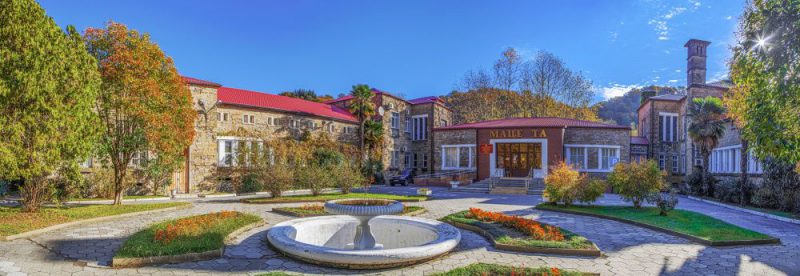
After the collapse of the Soviet Union, Sochi took on itself also the role of the main national resort (and the summer residence of the President of Russia) as the Crimea became a part of Ukraine. At the same time, the iron curtain was raised, external borders opened, and it turned out that foreign resorts, primarily Turkey, were much better than Sochi in terms of price and service. This started a long period of adaptation to a new reality that still continues to this day.
2007 opened a new chapter in the history of Sochi: the city won the competition for the right to host the 2014 Winter Olympics. Large-scale construction (and the most costly one in the history of the Olympic Games) had begun. The city got new roads, transport interchanges, airports, hotels, railway stations and invisible but vital infrastructures of water supply and sewage.
Tourism
Sochi, with its stunning mountain coast, endless pebble beaches, warm sunny days and vibrant nightlife, attracts annually more than 4 million visitors. From May to September, the population of Sochi at least doubles at the expense of tourists, including celebrities and Russian political elite.
Surprisingly, only 3% of all visitors to the city are foreigners. The location of Sochi does not contribute to the influx of foreign tourists either: neighbouring Abkhazia has its own Black Sea coast, and it is no easier for everyone else to fly to Sochi than to Turkey or Greece.
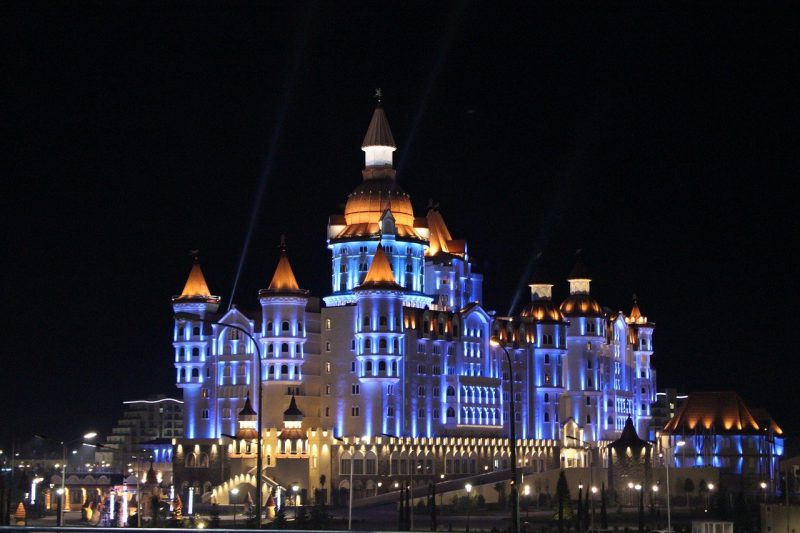
Where to stay in Sochi
Housing in Sochi can be found for any wallet and for any needs. Just hotel aggregators count more than 2 thousand accommodation options. In addition to them, the city rents countless houses, apartments and rooms. And not to forget numerous sanatoriums.
Transport
Distances in Sochi are such that you should just forget about walking from end to end on foot. We recommend you to study the transport network of the city in advance, this will allow you not to waste time and nerves on finding your way and not to be late for your flight.
City transport is represented mainly by fixed-route taxis (minivans), taxis and buses. Local taxi drivers, unfortunately, did not earn a good fame. Alternatively, you can rent a car. But keep in mind that sometimes the only place to park is a paid parking spot.
To move inside the city you can also use electric trains. Sochi has also an International Airport, seven railway stations and two seaports. Plus, there are peculiar non-mass city transports: a funicular and a few cable cars.
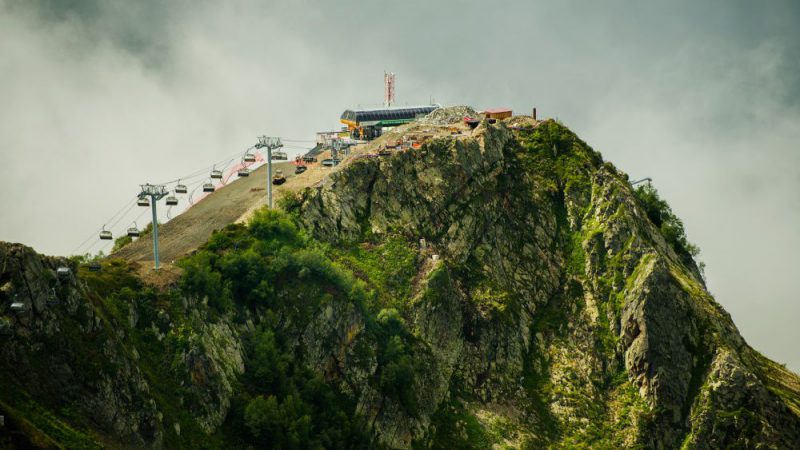
What to do in Sochi
To get bored in Sochi, you need to try really hard! Here, you can arrange an incredibly eventful vacation with jumps and bungee flights at “Skypark”, diving and skiing, racing, excursions in the outskirts and neighbouring Abkhazia, mountain walks, rafting, kayaking, curling, and parasailing. Add to this a list of amazing botanical gardens and parks, and you will have plenty to do every day of your holidays.
Sochi perfectly fits for having a family vacation with kids. There are excellent amusement parks with breathtaking slides, aquariums, interesting museums, a children’s railway and schools for small skiers and snowboarders.
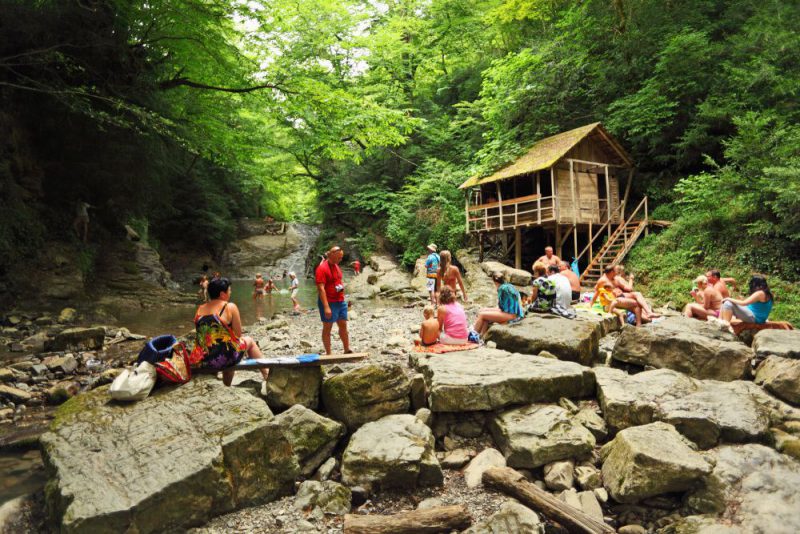
Lovers of ruins, however, might be disappointed: all medieval buildings in Sochi are not so well preserved. You can visit the Byzantine temple in Loo, as well as several ruins of the fortresses – Godlik in the village Volkonka, Khostinsky in a yew-boxwood grove in Khost and Achipsinsky near Krasnaya Polyana.
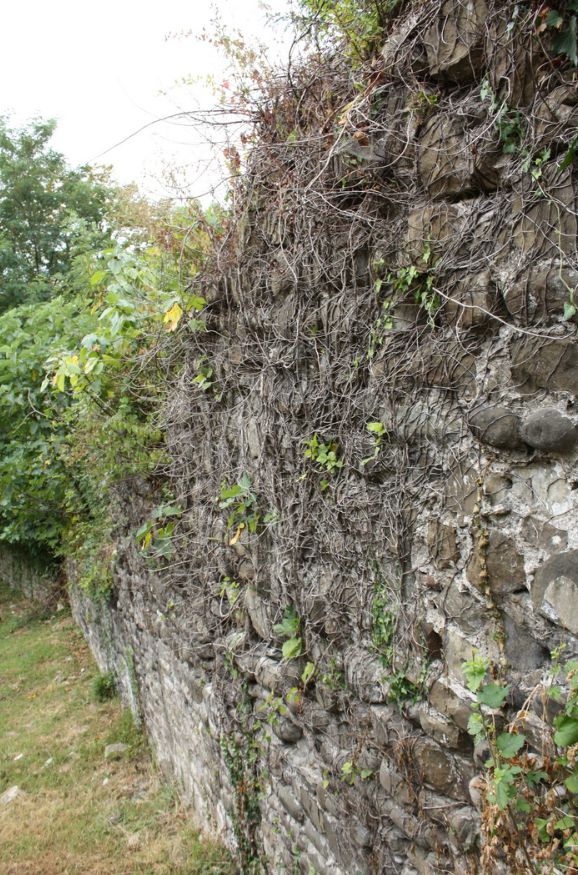
On the other hand, dolmens, religious buildings of the Bronze Age, can be found in Sochi in large numbers. You can find them in the most unexpected places, even at the courtyards of private houses. The most interesting of them is the monolithic Volkonsky dolmen in the area of Lazarevsky. The dolmen archaeological culture also includes a huge cult stone in the Kudepsta region, and generally you can find most dolmens in the vicinity of Lazarevsky.
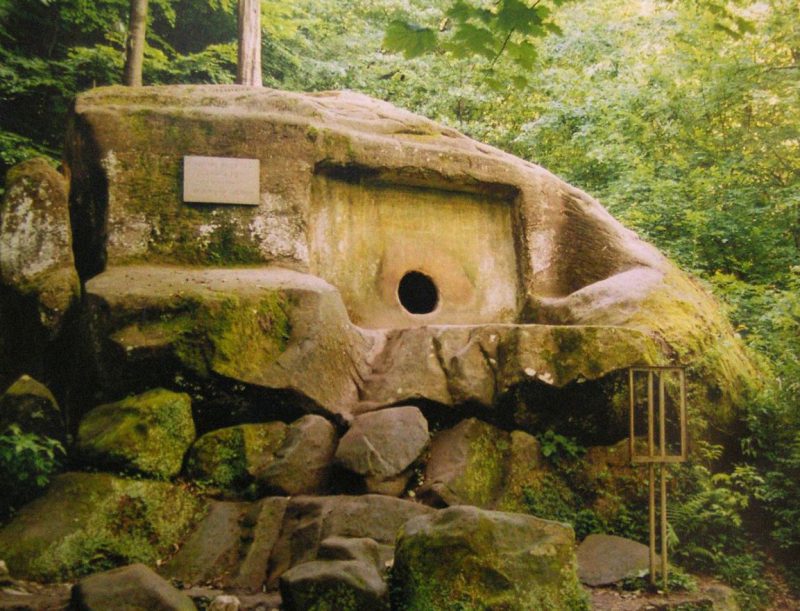
Most of the territory of Sochi is occupied by mountains. Sochi natural zone is very unusual. Despite the fact that mountains, the sea and subtropics are found in several places on the Black Sea coast (Crimea, Abkhazia, Batumi), only in Sochi and partly in Abkhazia massifs of the Colchis forest – ancient thickets of oaks, boxwood, yew, and ferns underneath – survived. The most important natural site is the yew-boxwood grove (Khosta) – a part of the Caucasian Biosphere Reserve and a UNESCO monument. It is a “must see” to visit.

All over the area you can find waterfalls and rocky mountain gorges. Especially popular are the so-called 33 waterfalls in the vicinity of Loo, but in general you will always find some beautiful waterfall within a radius of 5-10 km from any coastal village. The road to Krasnaya Polyana runs along the gorge of the Mzymta River: this in itself is a very beautiful place, where there are also waterfalls.
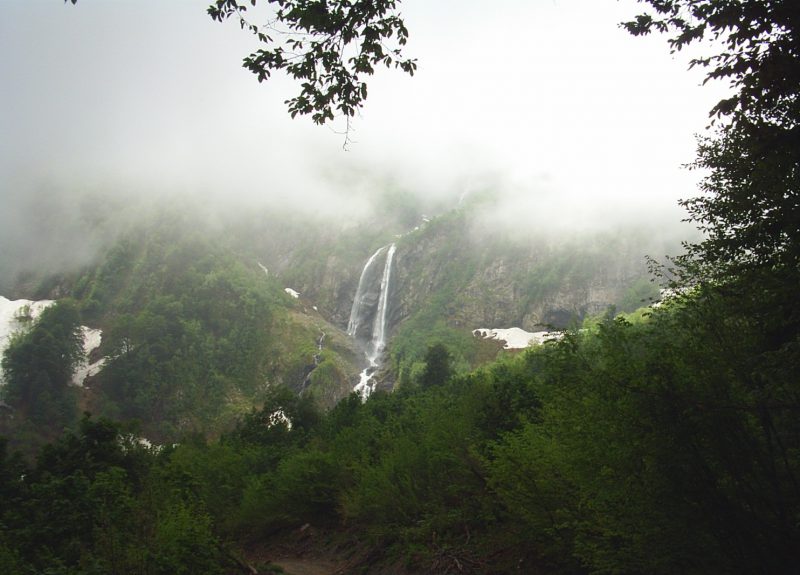
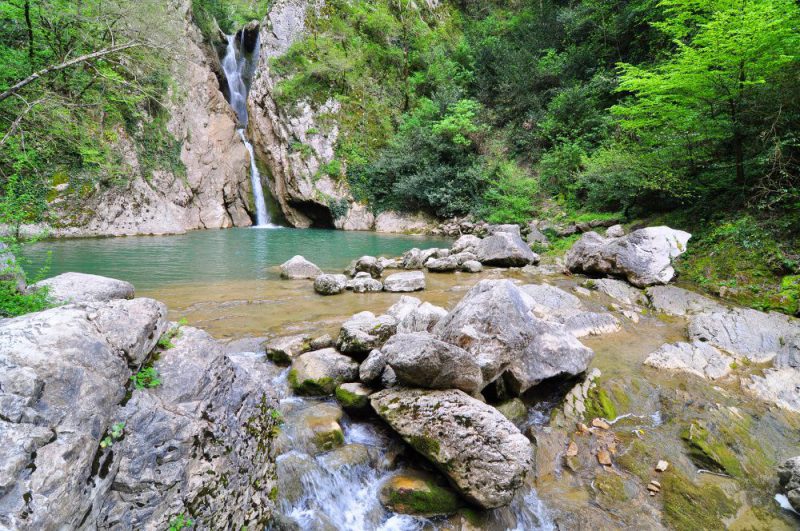
There are two large and interesting botanical gardens in Sochi – the Sochi Arboretum (Dendrarium) and the Southern Cultures Park in Adler.
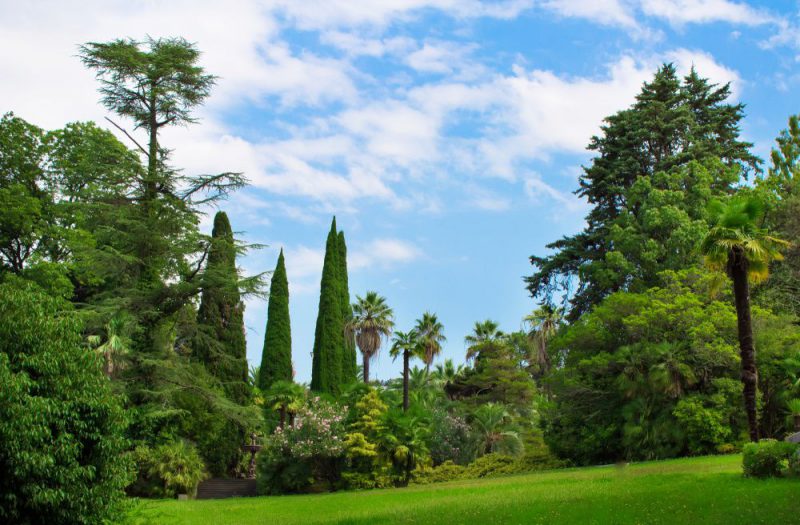
Sochi beaches
Sochi has hundreds of beaches and most of them are with pebbles. Even if you are lucky to get on a narrow strip of sandy beach, it will still be half composed of pebbles.
Sochi’s beaches are divided into three types: “wild”, closed and public. The former are good in relative cleanliness and privacy, there are also even several nudist beaches. The “wild” beaches do not have traditional beach amenities: sun-beds, showers, changing cabins.
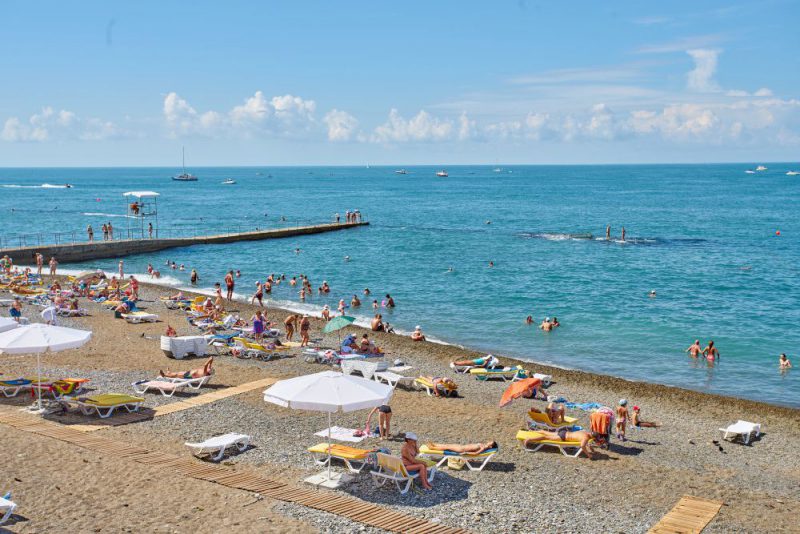
Closed beaches belong to various pensions and resorts. You can still come in some for a fee. These beaches are well watched, they are equipped with umbrellas and sun loungers, aerarium and other pleasant amenities.
Public beaches are free. Such beaches are good with the whole spectrum of water entertainments, but there may not be a place on them in the high season, especially on a strip by the water. To get to the sea, you would have to carefully step over tourists frying under the sun.
Diving in Sochi
Diving off the coast of Sochi may seem boring and not very interesting to sophisticated divers. Flora and fauna of the Black Sea are not so rich, there are neither beautiful coral reefs nor colourful fish. But the services of local diving centres are more affordable than their foreign colleagues, and many experienced travellers note the professionalism and responsible attitudes of instructors. So it is a good opportunity for those who make their first steps in diving and trying to get their certificates.
Having said that, diving centres in Sochi have something to surprise even professionals: these are extreme dives in underground cave reservoirs and in high mountain lakes.
And finally, do not forget that until the 19th century, the Black Sea coast was plowed by pirates of all kinds, so if you wish, you can organise a real underwater archaeological expedition and search for treasures.
Cuisine and restaurants
Make sure to leave some time to discover various edible and drinking establishments of Big Sochi and try local cuisine. Pay attention to fish dishes (horse mackerel, flounder, mullet, the local trout) and mussels. In terms of meat dishes, Caucasian ones are very common: kebab is offered everywhere, and many cafes and restaurants have a good menu of Georgian cuisine.
Sochi has a lot of fruits all year round. But you should buy them at the market, where you will also find colourful and tasty sweets like churchkhela (nuts in thickened grape juice).
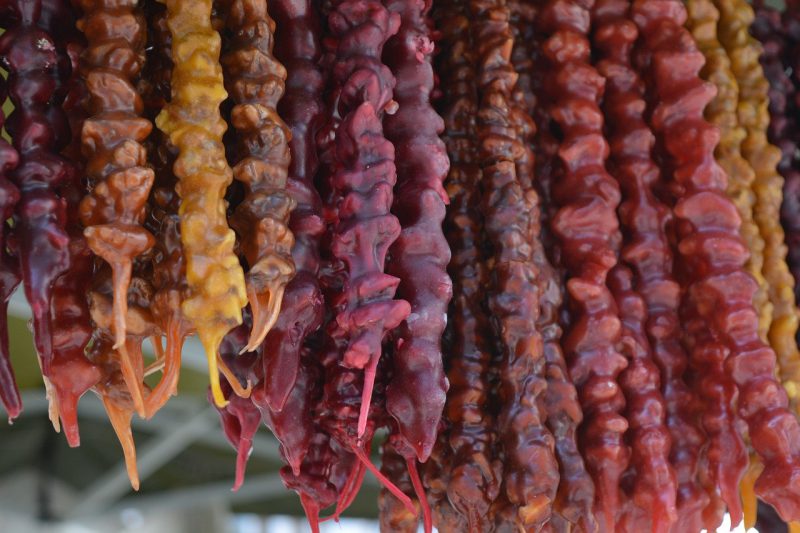
Night life in Sochi
During the holiday season, there is no shortage of nightlife in Sochi, however, its quality varies greatly. The level of fanciness and prices rises as you approach the city center. The most common form of evening entertainment are discos and bars. In the center of Sochi and in Adler there are nightclubs where rock concerts are often held – if you believe the reviews, they’re good.
Most cafes and restaurants – even at lower than average prices – consider it their duty to provide live music in the evenings. At the same time, in cheaper institutions, performance will be exceptionally mediocre.
Recently (2016) a casino has been officially opened in Krasnaya Polyana.
Conclusion
We have tried to keep it short, telling you about this colourful, but there is still so much to tell.
Russians say “it is better to see once than to hear one hundred times”. So instead of keeping talking, we offer you a couple of videos about Sochi:






